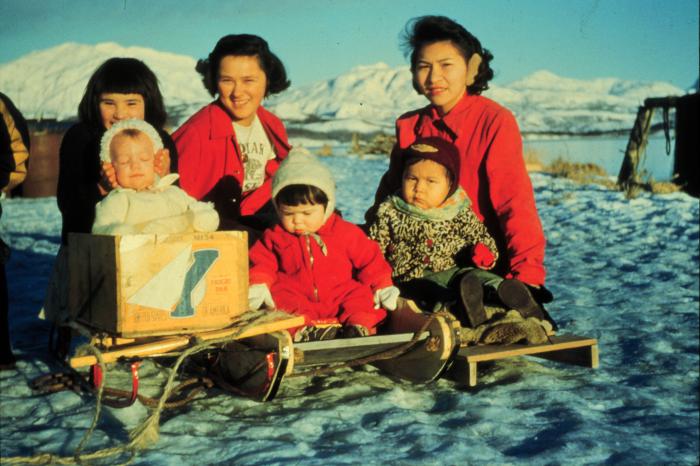Sled — Saaniik

Sleds are an ancient and widely used piece of technology. Designed to reduce friction, they help people carry loads over land. Sleds are common among northern cultures for travel in snow and ice, but they can also be found in warm climates. Societies around the world haul materials over grass, mud, and even sand with sleds. The ancient Egyptians used sleds to move large stones from quarries to construction sites.
Alutiiq people primarily use sleds to haul wood. Collecting fuel is a year-round chore. Although people harvest a lot of wood from the beach and use boats to carry it home, they also collect wood in inland areas. Alder, black birch, and cottonwood thickets are great sources of fuel. Some harvesters purposely waited for snow to collect from these thickets, so they can use sleds to carry wood home. Harvesters report that sleds are particularly useful for hauling wood over hard-crusted snow and ice. Elders Nick Alokli remembers the winter of 1947 when Akhiok Bay froze completely. Community members used sleds to cross the ice and harvest firewood from small islands.
Alutiiq craftsman made their sleds from driftwood and fitted them with narrow runners to prevent sinking the snow. Sled runners might be made of large spruce roots or naturally curved spruce limbs and smoothed to help them glide over the snow.
Sledding is also a popular activity in Alutiiq communities, where children enjoyed plummeting down Kodiak’s hills on snowy days. Historic photos from Old Harbor show young people with Flexible Flyers, wood and metal sleds popular in the 20th century. But these sleds were not just toys. Some were fitted with a box to help people carry groceries and young children around town.
